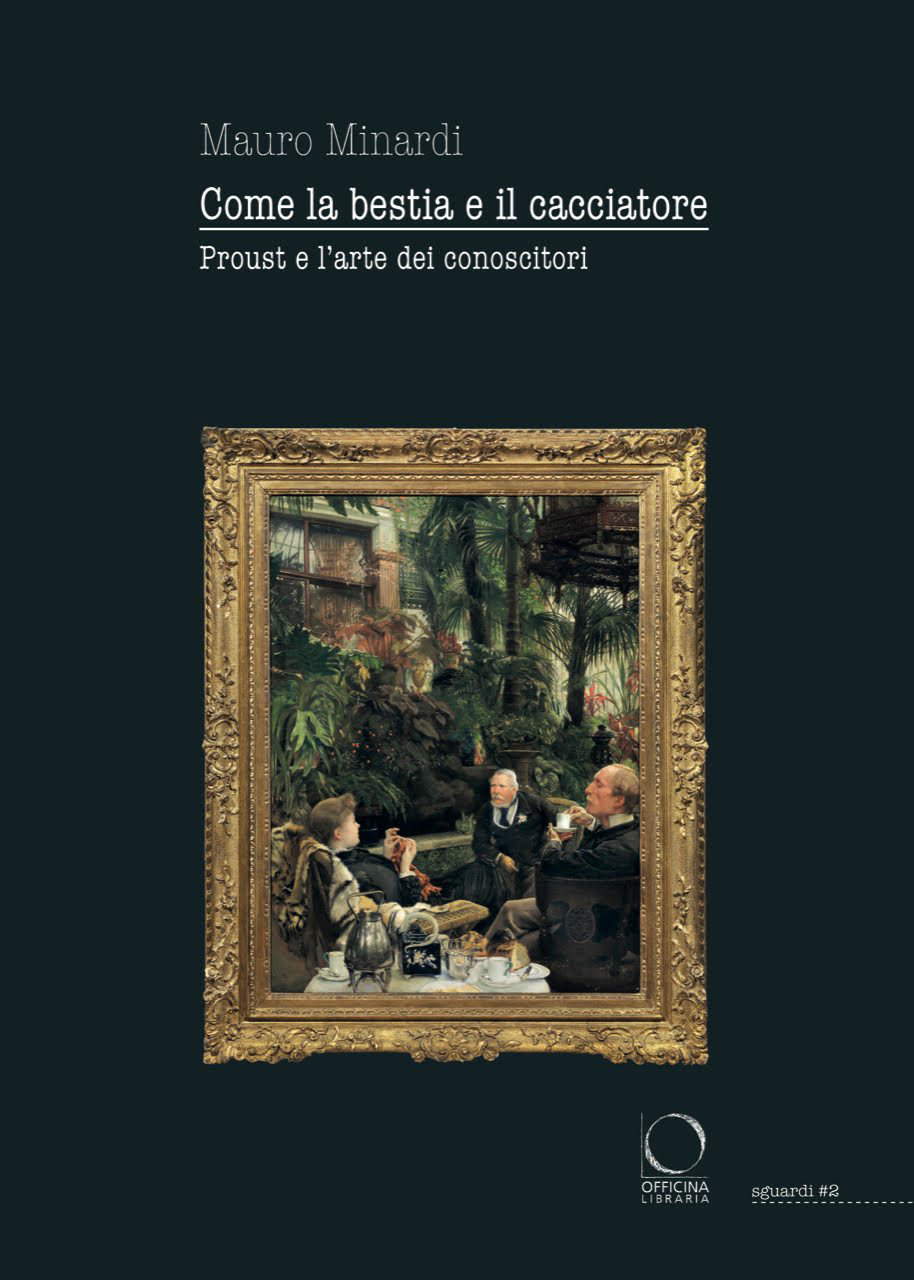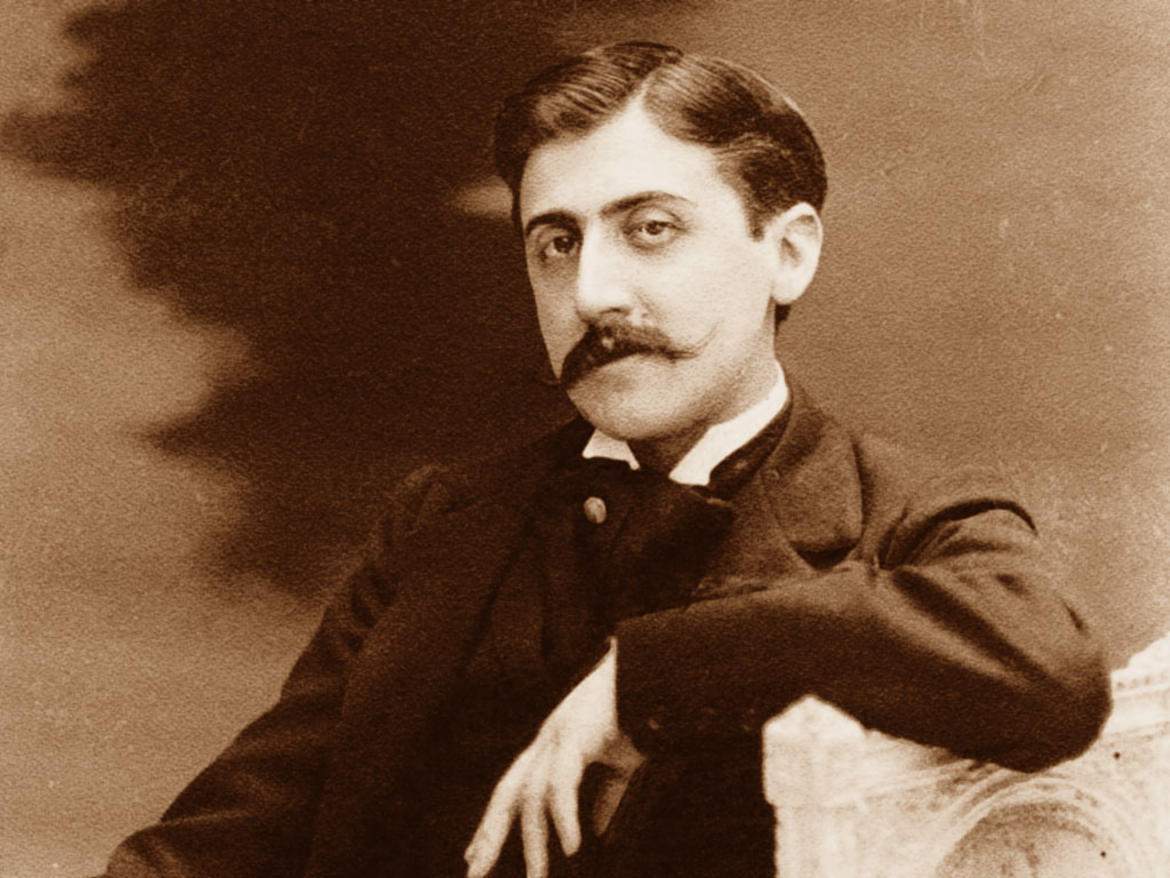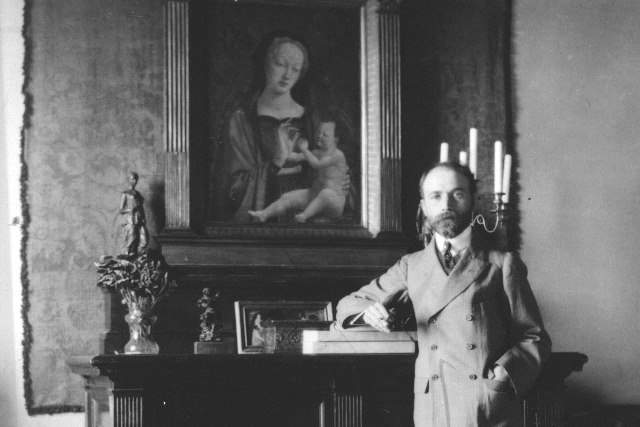Proust and Berenson inquirers. A book on the relationship between literature and connoisseurship
On November 18, 1922, Marcel Proust disappeared in Paris, and on the occasion of the 100th anniversary of the great French writer’s death, the publishing house Officina Libraria is publishing a curious volume by art historian Mauro Minardi, titled Like the Beast and the Hunter. Proust and the Art of Connoisseurship (150 pages, 18 euros, ISBN 9788833671611), which aims to explore the relationship between the author of À la recherche du temps perdu and connoisseurship (the reference figures, in particular, are those of Giovanni Morelli and Bernard Berenson). But not only that: Minardi’s investigation also extends to two other writers, Honoré de Balzac and Arthur Conan Doyle, in order to understand what elements all these authors have in common. Two, in particular: the gaze on the one hand and the flair on the other. The gaze understood as the ability to observe even the smallest details, to go beyond the appearance of things, to catch even the most imperceptible clues on the fly. Sniffing, on the other hand, is theintuition that allows one to find a thread in the material that the gaze has accumulated to arrive at a result.
“To detect the recurring traits in an artist’s work,” Minardi explains in the book’s introduction, “means distilling those ’immutable signs’ that allow us to define the essence of his worldview and personality: Thus, Proust commented, when in a room we are confronted with a parade of Rembrandt portraits, they strike us by ’what is common to them all, and that is the very lines of Rembrandt’s face.’” These are the ideas that inform the aesthetics of the Recherche, which find fertile ground in theEurope of positivism and the great faith in the primacy of science, and which have several elements in common with the methods of the great connoisseurs of the time. Like them, in essence, the author of the Recherche is able to scrutinize clues just as a hunter carefully observes his prey, although the clue is but a moment in the search: “only once intercepted, recognized and deciphered,” Minardi writes, “can it provide the sesame-opener that unlocks a secret invisible to the state of pure appearances.” Deduction alone combined with a spirit of observation and culture-the three qualities that Conan Doyle’s Sherlock Holmes considered essential to solving a case-is not enough: a faculty, that of intuition, whose elusive reasons rest in the unconscious, is needed.
Minardi’s volume begins by introducing the reader to the figures of Giovanni Morelli and Bernard Berenson, with a brief historical profile for both, and the terms of their method. Morelli, a medical doctor by training, was critical of attributive methods based on the general impression one could get from the painting, and introduced the concept of “Morellian figures”: signs, even minute details, that the scholar believed he could attribute to the artists because the artists unconsciously repeated them (the shape of an ear, hand, finger). Morelli’s method, born in the midst of the positivist climate, enjoyed much favor in the second half of the nineteenth century, and it set the school, but it also divided connoisseurs between “Morellians” and “anti-Morellians.” Berenson derived from Morelli the idea of minutely observing a work of art, but the Lithuanian-born American went further: the goal of a scholar should not only be to attribute this or that painting, but to reconstruct the personality of an artist, a theme that remained alien to the Morellian method. For Berenson, the “artist is not a botanical problem, but a psychological one”: there are not only the artist’s recurring gestures behind a painting, there is also the whole world that the artist himself drags behind him. His culture, his studies, his prejudices, his traditions, his emotions. Lying in his “botanical” conception of art history was Morelli’s limitation: thus, Berenson bases his method on the compraction between works (while not rejecting the Morellian principle of identifying characteristic anatomical details, unintentionally repeated by the authors), and on the “values” of the work, that is, the set of elements that combine to determine the quality of the work itself. And to be able to understand the quality requires penetrating the work in depth: a skill that requires, precisely, intuition.



“It is with Berenson,” Minardi writes, “that the figure of the expert as initiate is born. In other words, not only as a specialist, but as a person endowed with a keener sensibility, capable of touching chords unattainable for the layman. An arbiter of the quality of a work of art, the critic, paraphrasing Oscar Wilde, stands as the artist and from being the iconoclast of the museum becomes the priest through whom the mystery of attribution is accomplished.” The subsequent chapters of Like the Beast and the Hunter are those reserved for the investigation that seeks matches between the history of criticism and the history of literature (with an interesting interlude, the fourth and penultimate chapter, which traces the history of the Paris of Proust, Berenson and Robert de Montesquiou by profiling these three protagonists and framing their events in the cultural context of the time): we thus start with Balzac’s Comédie humaine, the set of novellas, novels and short stories within which Minardi finds a common protagonist, namely theeye, the gaze of the many characters who, in Balzac’s universe, continually observe beyond the surface. A “war of the gaze,” says Minardi, which Balzac would later pass on to Proust. The most exemplary case is that of Vautrin, the pseudonym of Jacques Collin, a recurring character in the Comédie humaine, a former prisoner with an impenetrable gaze and capable, in his battle against the police, of juggling the seemingly most useless details (a tone of voice, the movement of an eye, a slight blush). And then there is Pons, the collector able to buy works cheaply that later turn out to be masterpieces by great artists: an insight based probably on the general impression gained from the work. Balzac never knew Morelli: one can therefore only wonder, Minardi writes, about “what wonder would have been aroused in the writer in the face of books that elevated the scrutiny of the hidden but clarifying details, of physiognomy and physiology, and sanctioned the decisive influence of that Cuvier [ed. note: Georges Cuvier, biologist and naturalist] beloved by both.”
Proust, of course, knew Balzac and was moved by a keen circumstantial spirit and a keen sense for observation. And Balzac’s own obsession with detail animated the pages of the Recherche: an obsession, Minardi writes, “carried out in endless descriptions and analyses, the precise purpose of which one could hardly understand.” From the very first volume of the Recherche, On Swann’s Side, Proust denounces a certain knowledge of the methods of connoisseurship: Charles Swann, the protagonist of the story, is an elegant collector and fine connoisseur, especially fond of Jan Vermeer, who proves himself up to date with the Morellian method. Swann, however, is not the only character on whom Proust’s spirit of observation is poured: indeed, Minardi sccues that “the epicenter of the circumstantial system in the Recherche” must be found elsewhere. In the maid Françoise, for example, acute inquirer. Or in the Narrator himself, who observes the Baron de Charlus and suspects his homosexuality by studying his attitudes, and will later find confirmation in what the nobleman will do shortly thereafter. After all, the author writes, "espionage is one of the forms by which the thirst for knowledge is expressed in the Recherche. In most cases, it responds to the existence of a secret that ’acts involuntarily on us, excites in us a kind of irritation, a feeling of persecution, a delirium of investigation,’ on which ’obscure clues’ to be deciphered hang. And so spying, translating into a particular sense vague words that seem to mean something else entirely, questioning physiognomies becomes necessary in the face of a humanity that, even before hiding, lies, dissimulates, puts up a barrier of silence to the most innocent of requests." Therein lies largely the reason for the spirit that moves the Recherche.
Finally, we come to the last chapter that places, as per the section titles, Proust before Berenson, and Berenson before Proust. The two got to know each other in 1918: Berenson, writing a letter to his wife Mary, wondered, having read On Swann’s Side, whether his research had not influenced Proust. The writer, in fact, had read Berenson’s works and as early as 1906 had expressed a desire to meet him in person. Berenson, however, left a rather merciless portrait of Proust, reconstructed through the testimonies of the people with whom he had confided. With Ugo Ojetti, for example, who summarized what Berenson had reported to him: Proust was thus “dirty, anointed, cinedo. Son, in manner, of Robert de Montesquiou. But Robert was spontaneously lordly, arrogant, sharp, insolent, swashbuckling, seventeenth-century. Proust was an imitator. Sharp shrill voice. He spoke, he spoke. Or invisible, or theatrical. Rumpled, collar unbuttoned, suit worn, bohemian. Never sunlight in his room. Smell of a dog cage. Gently skinned, layer by layer, down to the bone, every character.” An unpleasant character, a “bad imitation of Montesquiou,” Berenson himself, who despised the person, but still admired his books, would have judged. To the point that Berenson would later recognize in Proust, Minardi writes, “an introspective eye on the realms of the spirit akin to his own.” The author of the Recherche became the “golden mirror” where Berenson “reflects his own sensibility, multiplying the representation of himself, and at the moment when he recalls, in the annotations of the present as well as in the scouring of the vast horizons of the past, all his years, he finds an interlocutor of choice in the one who had staked his entire oeuvre on Time.” Two personalities who marked their respective fields, analyzed (with an equally inquiring eye, one would say) in a volume that cannot be missed in the libraries of those who appreciated one or the other. Or both.
 |
| Proust and Berenson inquirers. A book on the relationship between literature and connoisseurship |
Warning: the translation into English of the original Italian article was created using automatic tools. We undertake to review all articles, but we do not guarantee the total absence of inaccuracies in the translation due to the program. You can find the original by clicking on the ITA button. If you find any mistake,please contact us.




























